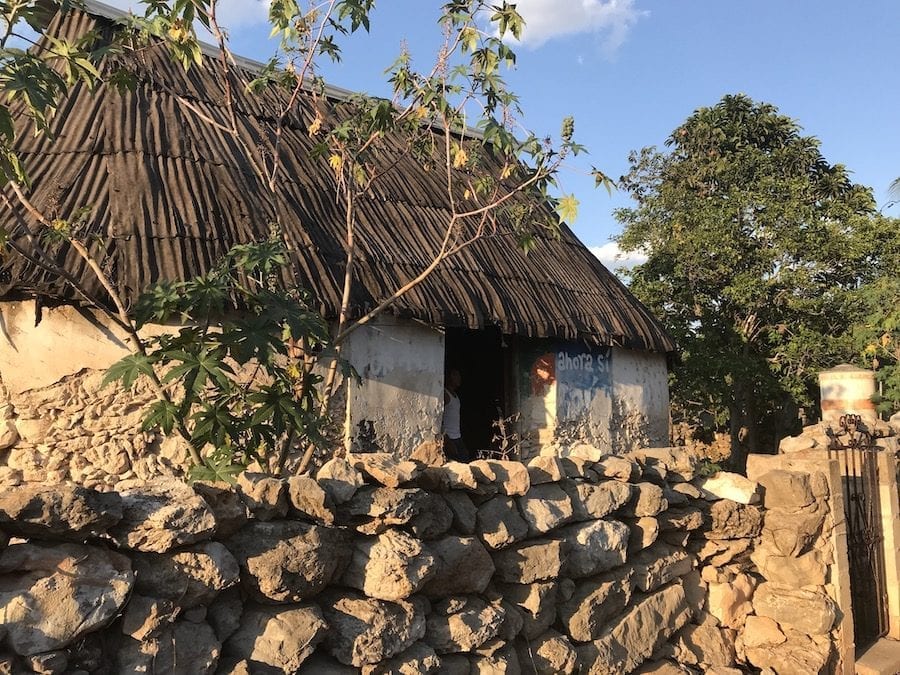As world travelers, and especially since half of our team is Navajo Native American, immersing ourselves in local and indigenous culture is important for us while we travel. To keep local, cultural traditions alive and thriving as travelers and tourists we need to support them. If we only stay in developed resorts, and we only interact with other tourists or English speaking people, and we only shop at big box supermarkets – we lose by letting an entity from outside the local culture decide what we eat, where we stay, who we get to know, and what we do while we travel.
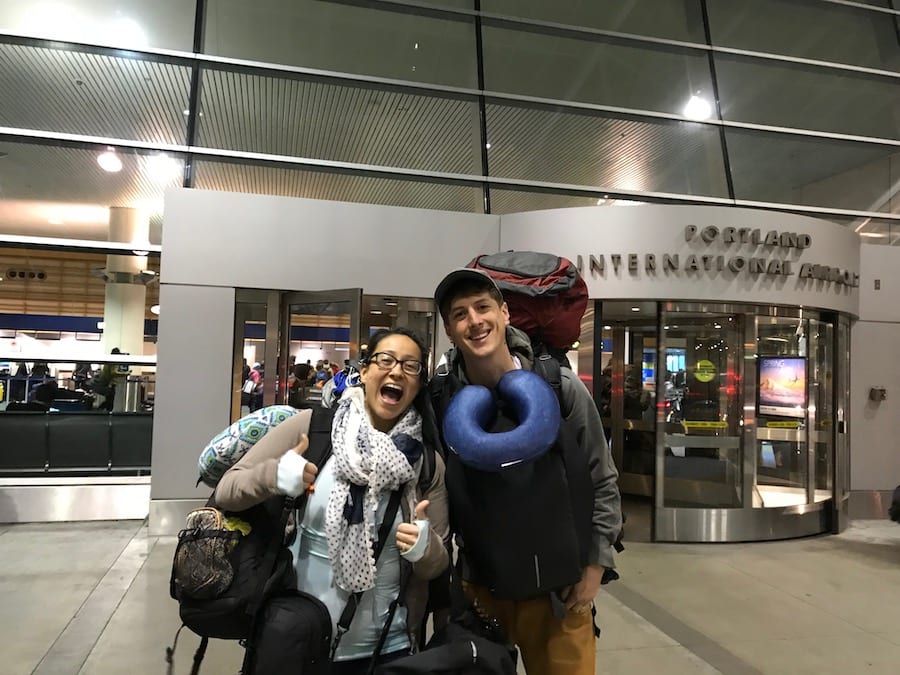
As most of you know we left America and our bubble of Portland, Oregon in March of 2018. We were on a mission to explore and immerse ourselves in the local cultures around the world, tell their stories along the way and help out where we could. We started in Merida, Mexico which is an incredibly friendly city. You find it popping up on top lists of places to move for Expats and Mexican Nationals. But with the increase in population, foreign business, and tourism, how do we help to save and preserve the traditional, local culture we love?
The Joys of Shopping Locally
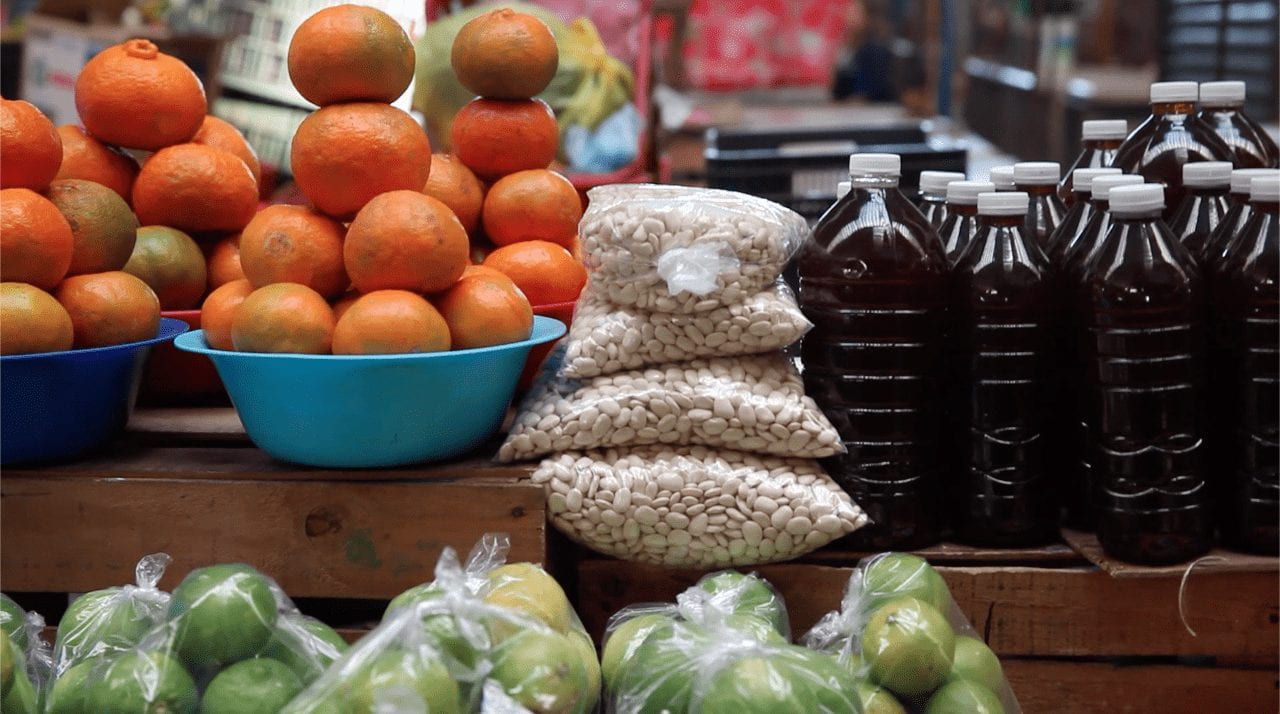
We have found more joy in exploring the authentic, even if it is uncomfortable at first because it is different than we are used to. You find that when you know a locally grown carrot will only last for a week and a half before going bad, you enjoy that carrot even more. (Did you know that ninety-nine percent of strawberries had detection of pesticides when they were tested by federal officials, according to this article?)
The benefits to shopping for produce and food locally is tremendous including reducing your carbon footprint due to the reduction of gas mileage to get it to the store, direct profits going to the farmer, fresher foods that aren’t needing to be coated with chemicals to stay on the shelf longer (the average apple sits in cold storage for 14 months at a mainstream supermarket – gross!), support to farms and their families and communities, and mostly because local markets contain foods by farmers that grow organic, without pesticides or GMO’S!
The best way to tell if it is real food, is that it will look “cosmetically challenged,” with a few dings or insect bites, it won’t have a shiny, waxy coat but instead look dull or a little dirty on the outside, and it will be ripe (according to this article).
T.E.K: Tribal Ecological Knowledge

Modern scientists recently have been turning toward ancient techniques to solve modern issues when it comes to ecological or food scarcity issues. This knowledge is commonly referred to as Tribal Ecological Knowledge or for short, TEK. This is one reason we support local culture. It is why lessons passed down for thousands of years with people that have lived in harmony with the earth, have been through the changes in that particular location, and survived it all – is important.
We sometimes need to look at where we come from in order to move sustainably and wisely into the future, especially in a rapidly changing world. Check out this great article for more info on TEK and about why TEK is important.
Examples of Local, Traditional Culture
Hanal Pixan existed since pre-Columbian days and literally means “Food for the Souls.” A ceremony of preparing the favorite foods, beverages, and sweets of deceased loved ones and placing it on an altar, the deceased souls return from the grave for the days of Hanal Pixán (at the end of October and beginning of November) to spend with their family. A giant “pib” or underground oven is dug out and larger tamale like dishes are prepared in banana leaves and then put on top of the coals in the bottom of the pit. Leaves, branches, and the former dirt are placed on top to let it steam and cook into deliciousness for hours. Afterward, the perfectly cooked pib is dug back out and placed on the altar during a special ceremony devoted to the deceased loved ones. Prayers for safe journeys through the underworld are whispered.
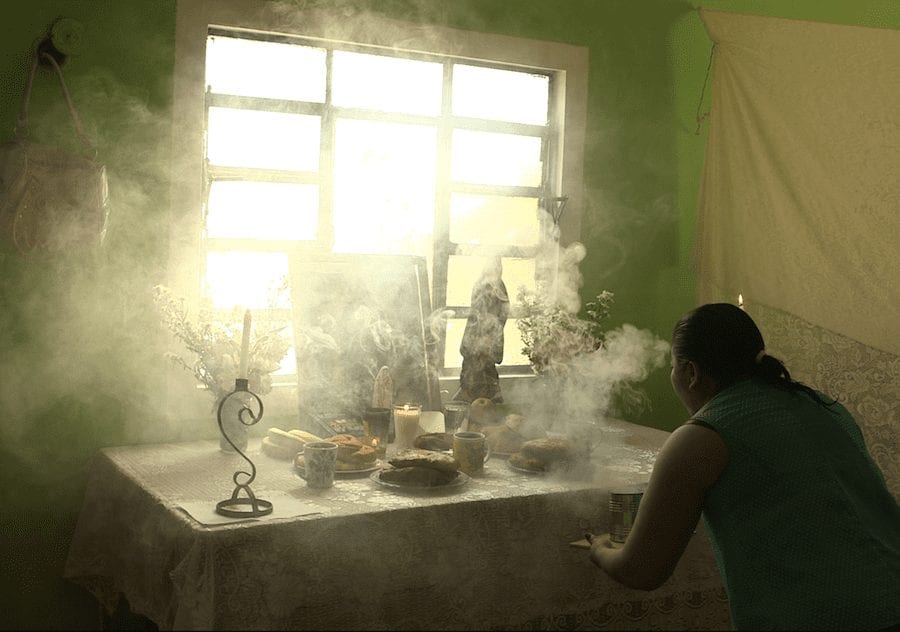
Similar to Hanal Pixan, Día de

Indigenous Shamans, Healers & Herbalists
Some of the spiritual traditions that have been passed down generation to generation (often in disguise for fear of persecution during the Catholic conquests in Latin America and the governmental assimilations in North America) are very powerful in healing a patient’s mind, body, and soul.
The indigenous healing modality is holistic in nature, accounting for all of the many aspects of human life from emotions, thoughts and physical illness or affliction and how they are all connected to each other. Slightly different in approach to modern Western medicine, an indigenous healer (sometimes known as a “shaman” or a “medicine man”) practices a combined method of prayer, plant medicine, ritual practices, and even some western medicine techniques. Healers are often taught by elders in their families or communities or through dreams with communication with other beings. (For more about Maya healing read this interesting article.)

It is also interesting to observe the co-mingling of pre-Columbian religious ritual with the dominating Catholic or Christian religion to create an entirely new and hybrid type of belief system. For example in the Yucatan, Maya people were forced to disregard their religion and take up the Christian cross in their newfound churches. It was an easy transition for the Maya because the cross beared resemblance to the Maya’s sacred Ceiba tree of life which represents the three dimensions of existence – the underworld, the earth and the heavens above. The altars in churches also bear
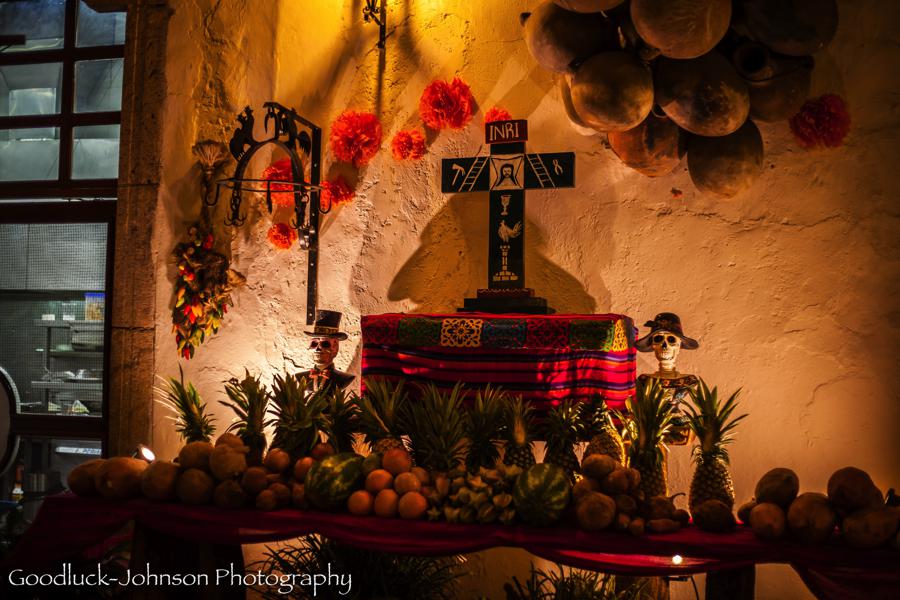
Throughout Mexico, Latin and North America there are opportunities to visit and even study under the tutelage of an experienced indigenous healer. One can expect much healing and revealing benefits through this process, such as through a sweat lodge or plant medicine ceremony. However, there has been some controversy over the monetization and even inauthenticity due to the commercialization of such an experience, and we highly recommend that you only seek out the most authentic and trustworthy of sources. As we have mentioned before, the best thing to do is find a word of mouth recommendation from local people who you meet while you are based in that location. For more info check out our blog post Travel Destinations – Traveling Outside of the Box here.
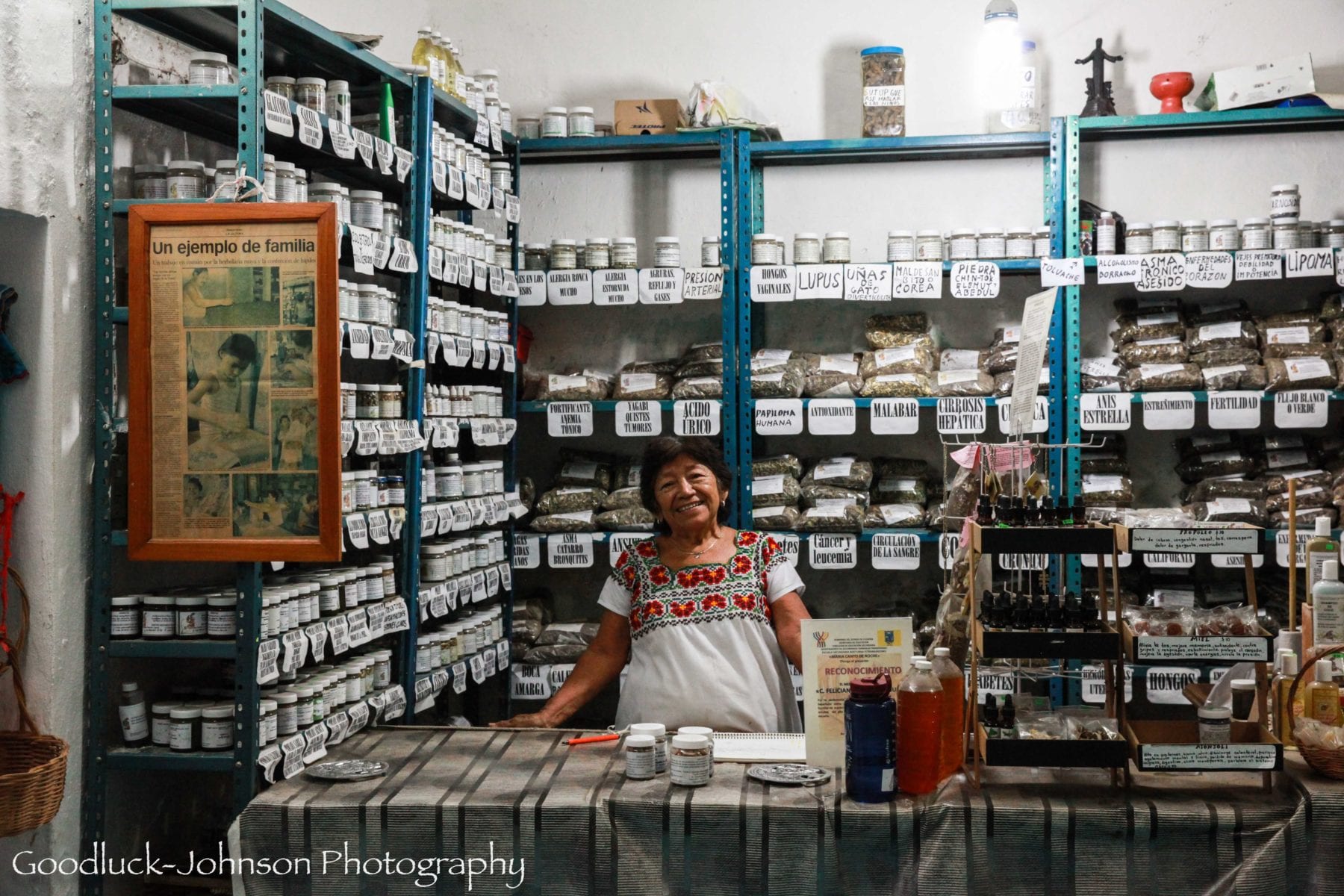
Because of a recommendation by a local publication here called Yucatan Today, we visited Centro Botanico Naturista de Izamal La Melisa in Izamal – a beautiful yellow city an hour outside of Merida. The herbal shop was run by a small Maya elder woman who graciously greeted us along with the herbalist who I believe is her husband. They were part of a family history of farmers specializing in growing native medicinal plants and preparing a large selection of small bottles of herbal tablets that could help aid any type of ailment from menstrual
Stories of Indigenous Cultures
For example in the Maya highlands of Guatemala, the K’iche’ (Maya) people had passed down the Popol Vuh (or Wuj) story which covers the Maya creation myth including the Hero Twins Hunahpú and Xbalanqué. In 1550, the K’iche’ people finally wrote it down after the conquest of the Spanish conquistadors since many of the texts were burned or destroyed. Popol Vuh (or Wuj) literally means “Book of the Council” or “Book of the People.”

Asking local people who live there, requesting a special tour by a local, visiting local museums and archeological sites as well as visiting local spiritual healers or experts, is a great way to learn more about the important stories of the people who originated in the area you are visiting.
What is Rural Tourism?

Because of the damage that can be caused by mainstream tourism to an area, both environmentally and socially (for the locals and their economy), different forms of alternative tourism have been created, which include:
- Ecotourism
- Rural tourism
- Adventure tourism
All of these types of tourism offer a real benefit to the local people (who have lived there for generations), while also seeking to preserve the cultural and environmental resources in abundance. According to Wikipedia, the Principles of Rural tourism include:
- “Minimize the impact of rapid urban development.
- Build environmental and cultural awareness and respect
- Provide positive experiences for both visitors and hosts
- Provide direct financial benefit for conservation
- Provide financial benefits and empowerment for local people
- Raise sensitivity to host countries’ political, environmental, and social climate.”
Ek Balam Eco Retreat: a Maya Model for Rural Tourism

For example, Uh Najil Ek Balam (a rural tourism option) is located in the tiny village of Ek Balam. The Ek Balam village was designed and built in the mid 20th century and is run by the Maya families who live there along with a Maya mayor. The houses were constructed with traditional materials – guano and wood – nothing modern. The town grew in size, comprised of Maya families working together on their milpa (i.e. fields) and living off of the crops they harvested. Excavation of the closeby Ek Balam archeological site didn’t begin until 1980 with a group of Americans.
With the surge in tourism due to the excavation of the Ek Balam archeological site, in 2000, the Commission for the Development of Indigenous People – met with the landowners to propose a project that would use grant money to build Maya huts for the tourists coming. After the first house was constructed with the aid of outside contractors for sixty thousand pesos, the Maya people living there realized they could do the work themselves for much less money and use the rest of the money for their own village. They formed a group called the Unajil Ek Balam with the mission of continuing to receive financial aid from the government for such projects. With issues in finance due to being a nonprofit and not being able to market themselves to the public, they changed their organization to the Cooperative Society U Kuchil Kuxtal in 2007.
A Mutual Relationship
As mentioned previously, rural tourism seeks to benefit both the local people with the financial gain of tourism while also maintaining their regular day to day life. Because the tourists come for the sole purpose of seeing what “a day in the life” of the people who live there is like, there is a very mutually respectful and reciprocal relationship between tourist and host. The people of Ek Balam are able to share with the tourist their way of life – from farming crops and corn in their milpa (fields
The Maya townspeople don’t have to give up their traditional way of life, yet are able to make extra income (during the low season of farming or fishing), while the tourists are afforded a glimpse into an authentic, local culture and indigenous way of life. New friends and memories are made. Although the Maya people there are farmers, fishers or artists primarily, rural tourism has proven beneficial.
As one person said in the documentary “From the Fields to Tourism” (see video below) “they’re [Maya people] still fighting to keep and conserve their cultural identity.” Many tourists coming from places like France know nothing about modern Maya people, thinking they are just an ancient civilization. They are surprised to find that not only do these people still exist today but truly get to see them living their lives, working the fields, creating artistry, performing ceremonies and welcoming them into their homes.
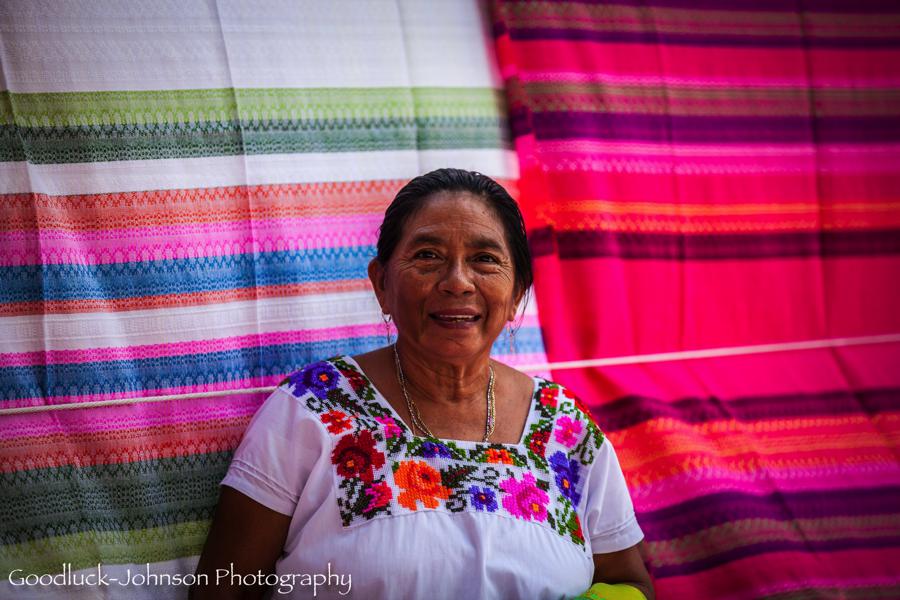
Another benefit of rural tourism is that it helps the Maya not to have to travel far distances to work in touristic jobs. Rather they can work at the local eco-cabanas, etc. and because of that, they experience a higher quality of life. Another benefit for the tourists is that they are treated like brothers and sisters, welcomed into the homes of the Maya to learn a new culture and a traditional way of life. It becomes a source of education and mutual understanding and learning. It is also beneficial for the Maya people who can sell their art, hammocks, handicrafts and embroidered clothing directly to the tourists and make the profit instead of going through a middle man.
There is a really interesting documentary about this area and the rural tourism exemplified that you can see below.
Cultural Immersion

So how do you immerse in local culture if it is not your own? As mentioned throughout this blog post the most vital, key aspects of cultural immersion include:
- Slower travel (helps you get to know the locals and the history of the place you are going)
- Word of mouth recommendations for things such as locally run cenotes or sinkholes (Homun, Yucatan etc), Maya villages, Markets, churches, holiday traditions (Hanal Pixán, Dia de Virgin de Guadalupe, Easter, etc), fairs, artisan products (honey, hammocks, henequen purses, etc.)
- Shopping and eating locally
- Immersing in the traditions, stories, history and culture of the locals and indigenous communities through hiring local guides or through booking a rural tourism package
- Ecotourism and Adventure tourism that works with the locals directly – for activities such as nature watching, bird watching, kayak tours, mangrove tours, cenote tours,
Researching and going through tourism companies that work in a fair trade type of way with locals and indigenous tour guides, etc and that do not disturb the delicate balance found in the natural places you go

Opening Up to the World
Every culture has its world view, its own way of life and cosmology, and its own problem-solving processes. The preservation of local cultures worldwide is vital in maintaining our human identities. By immersing yourself in local cultures while you travel you will not only vastly open your horizons to what is possible in the world, but you will learn a lot about humanity and the importance of mutual understanding amongst different people in the world.
By opening yourself up you will not only benefit the local population and their economy but you will educate yourself and others who you meet through your very authentic experiences.

